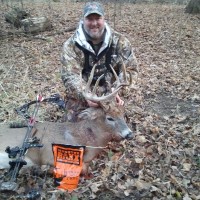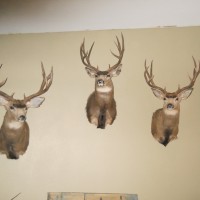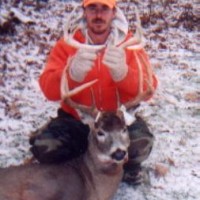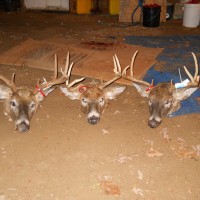I’ve got to ask….how do each of you, especially those of you practicing QDM or searching for that wallhanger, determine the size of the deer in the relatively short timeframe given.
In reviewing my last two seasons of gun hunting in WI, I’ve harvested a doe in each year and have passed on three of the largest 5 deer I’ve ever seen on our property. This year, like last, I’m starting to doubt my decision to pass on some of the bucks I’ve encountered.
I don’t know if I’m thinking this through properly. I hunt Buffalo County so I’ve been looking for that giant deer and I’ve seen two giants in the 5 years I’ve been hunting there.
Both in doe only T-zone hunts.
Take this year, I’m EAB qualified with last years doe, I’ve got two stands that I’m really excited about. Both are the efforts of refining spots learned over the last five years. They are both on steep ridges so I decide opening day to sit in a big stand literally 100 yards from my truck, until 30 minutes after sunrise, at which point I’ll make the treacherous walk to stand #1.
20 minutes into legal shooting and I hear a deer approaching, bring my rifle up, see that it’s a buck and a decent one, and start to shape up this deer. It’s doing a slow trot through the woods, time from the 1st sighting to last sighting is less than a minute. I count eight points but I’m not terribly in love with the body. Probably a 2.5 year old. So I let it pass, 15 yards from this stand.
Two hours later I harvest my doe from stand 1. Time from the first sighting to shot is less than 15 seconds. I hunt a steep hill and on what I call spines with a deep ravine between them. If a deer comes at me perpendicular to the spines, i.e.a deer that is maintaining altitude, I have about 20-30 seconds tops to see, analyze, and shoot. If a deer comes at me parallel to the spine, ie a deer that is going up or downhill, I have much longer, as much as 10-15 minutes.
Well,that eats up Saturday morning getting her out of the woods. Saturday afternoon in stand 2 produces nothing. On Sunday, I get to stand #2 mid-morning. At about 1 pm I get out of the stand to stretch, open up a Mountain Dew. I’m being very quiet but my gun is near me against a tree. I spot a buck at the bottom of the ravine, right in the middle of the spines. He’s coming uphill. I pick up my rifle and count 8 points. (here I’ll tell you that I need a new scope, mine’s 30 years old but I shoot this gun extremely accurately so I hate to mess with it, its not broken. But on a 50 yard range, I can’t tell through the scope if I’ve hit the target, I have to use spotting glasses). I judge the body and its bigger than yesterday’s buck, but again I judge it to be a 2.5 year old. I set my gun down and he’s still coming uphill. At that point I grab my new binocs and whoa. Now I’m not sure. The magnification on the binocs really makes me question my decision to let this one pass. I reach for my gun, the deer busts me and jumps off.
I’ve attached some pics of my view from stand 2. I can almost step into my stand from the ground on one side but on the other side it’s already about 8 feet to the ground, it’s that steep. The bleached tree laying mostly over is in all three pics. The top of it is 30 yards from me and @ 30′ below me elevation wise. This deer came up the hill, from the right side of picture 1, and made it all the way up to even with me (far left of pic 2)
So there’s the background and geography of my question. How do you judge deer on the hoof? I struggle to use my binocs first cause deer cutting across the spines will only give me a 20 second window of opportunity, not enough time to glass, raise rifle, and shoot.
What do or what would you do? Would you have the binocs ready first or rely on the 30 plus year old scope on my gun. The easy answer is to buy a new scope, but like I said, I really have this gun dialed in. I haven’t touched the adjustments since I started shooting again 5 years ago.
What other suggestions do you have? I really hate that I have to go through another entire year wondering if I did the right thing in letting those two bucks pass, or if I made an error in judgement of their size. Is it likely with a poor scope that I missed points and the deer were actually 10’s, or more?
Am I right to think that when I see the right deer, it will be a no brainer situation and I won’t waver on the decision?
Eric 
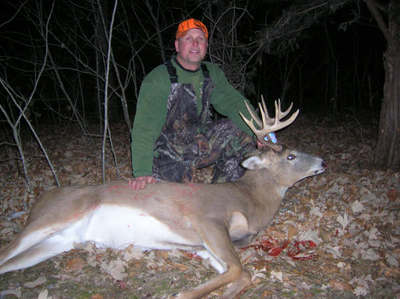

 Kidding…I agree with Mossboss and get a new scope. If you can spot him in the scope and size him up you’re that much better off. And try and grunt or whistle to try and stop him to give you a few extra seconds to size him up!
Kidding…I agree with Mossboss and get a new scope. If you can spot him in the scope and size him up you’re that much better off. And try and grunt or whistle to try and stop him to give you a few extra seconds to size him up! 


